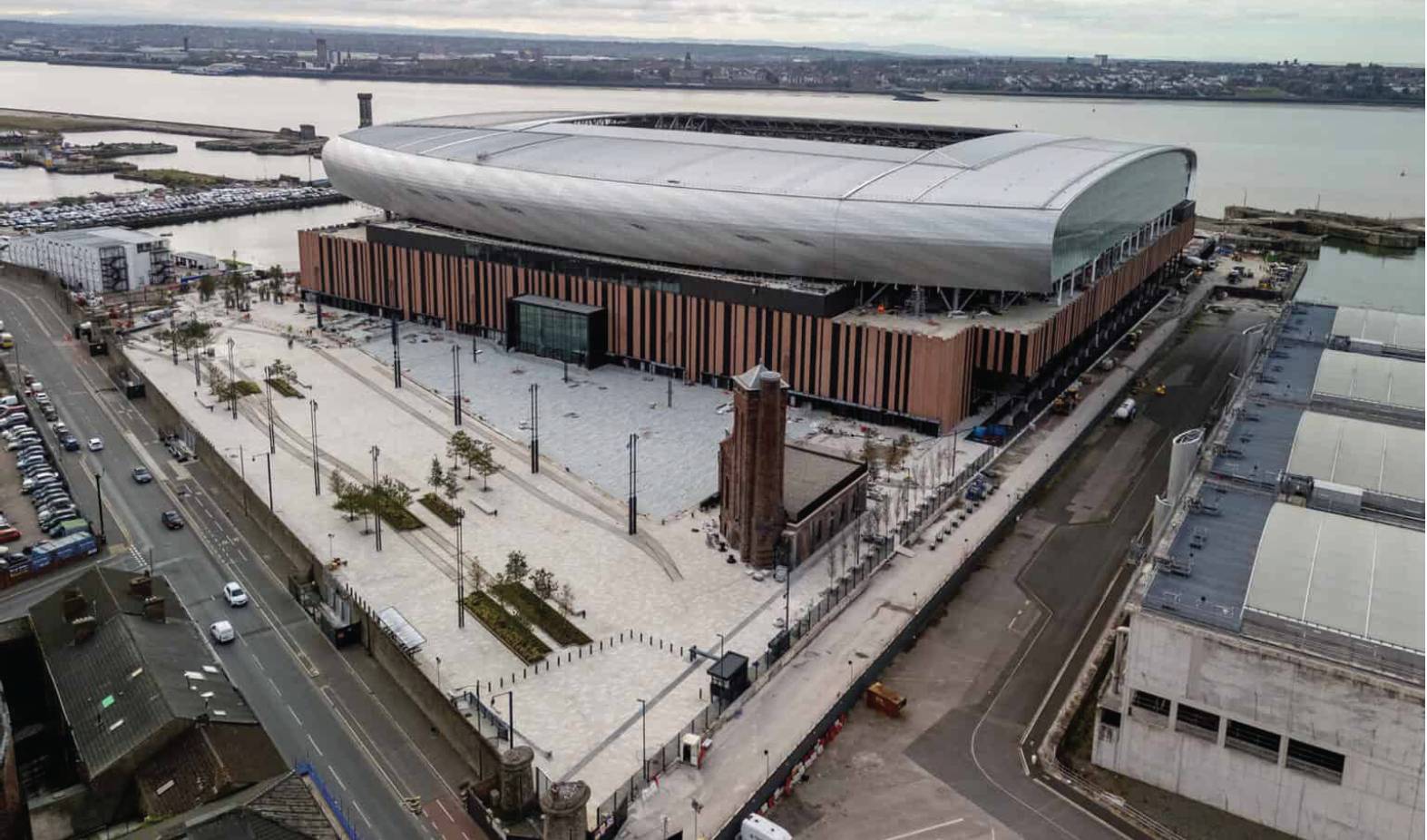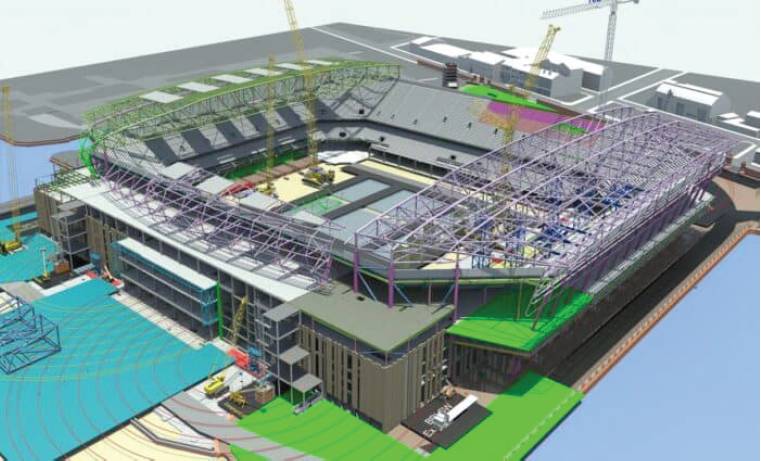
A NEW ERA FOR EVERTON
The development of the Hill Dickinson Stadium signals a new beginning for one of football’s stalwarts
On 22 February, Everton played against Manchester United for the final time at its home ground of Goodison Park, the historic Liverpool stadium where the two Premier League rivals first squared off in 1892. Having played its final ever game at the ground on 18 May against Southampton, Everton, one of the world’s oldest and most storied football clubs in Engalnd, is preparing to move into its new home on Bramley-Moore Dock.
More than 6,000 components, including pre-cast composite red brick façade panels, were designed to remind fans of the historic Archibald Leitch-designed wrought iron trusses at Goodison Park, which was the country’s biggest football ground when it was built in 1892.

Everton’s new stadium is the centrepiece of the rejuvenation of Liverpool’s Bramley-Moore Dock.
The preparations are already underway.
On 17 February, the first of three test matches, an under-18 exhibition match, took place at the recently completed Hill Dickinson Stadium on the banks of the famed River Mersey, to which 10,000 lucky fans were able to attend.
The 52,888-seat venue, which is part of a holistic masterplan to rejuvenate Liverpool’s waterfront, is a significant step up from Goodison Park’s capacity of 39,414 and features four covered seating areas with a structural frame primarily consisting of steel trusses and precast concrete.
Almost 500,000 cubic metres of sand were dredged from the Irish Sea for the dock infill, which creates a base for the stadium foundations.
More than 6,000 components, including pre-cast composite red brick façade panels, were designed to remind fans of the historic Archibald Leitch-designed wrought iron trusses at Goodison Park, which was the UK’s biggest football ground when it was built in 1892 and has hosted more top-flight matches than any other venue.
Laing O’Rourke, used drone technology to track progress against a 4D model, arming multi-disciplinary stakeholders with real-time data for planning and daily decision-making. By working in a collaborative 4D digital environment, the team was able to complete the project ahead of schedule and within its budget.
Bentley Systems, the global infrastructure engineering software company and a specialist in digital twins, played a key role in the project.
Laing O’Rourke, the lead contractor on the four-year project, used Bentley’s Synchro 4D software to simulate and visualise the phased construction process to minimise safety risks and disturbances to marine life at the heritage waterfront site.

Laing O’Rourke used Bentley’s Synchro 4D to simulate and visualise construction sequencing for the new stadium.
The UK-based engineering and construction firm used drone technology to track progress against a 4D model, arming multi-disciplinary stakeholders with real-time data for planning and daily decision-making. By working in a collaborative 4D digital environment, the team was able to complete the project ahead of schedule and within its budget.
All four stands will be open for additional test matches over the coming months to secure required safety accreditations, with attendance gradually ramping up close to full capacity. Everton will start the 2025/26 season in the new stadium, which will also host select women’s matches and serve as a UEFA Euro 2028 host venue.